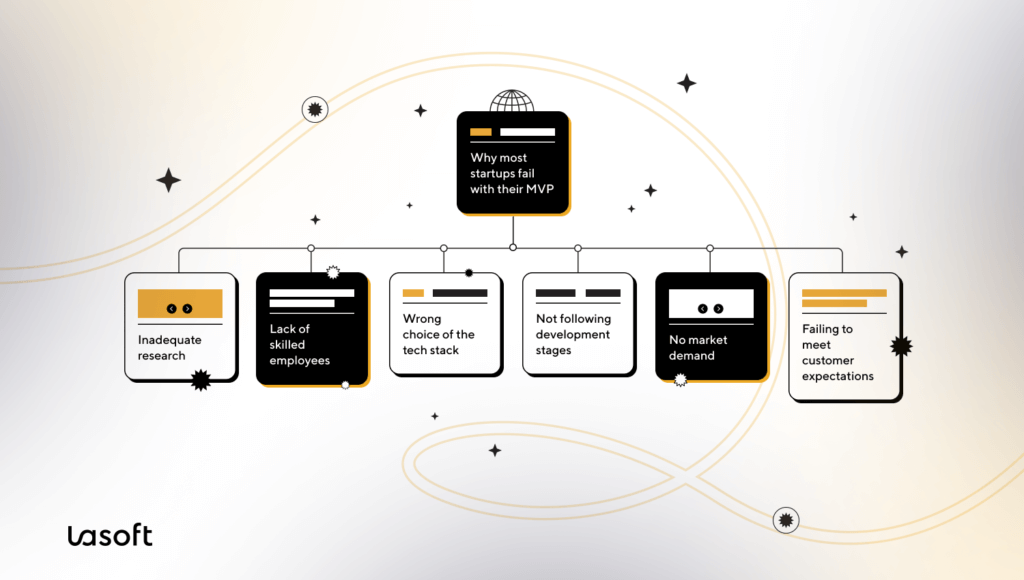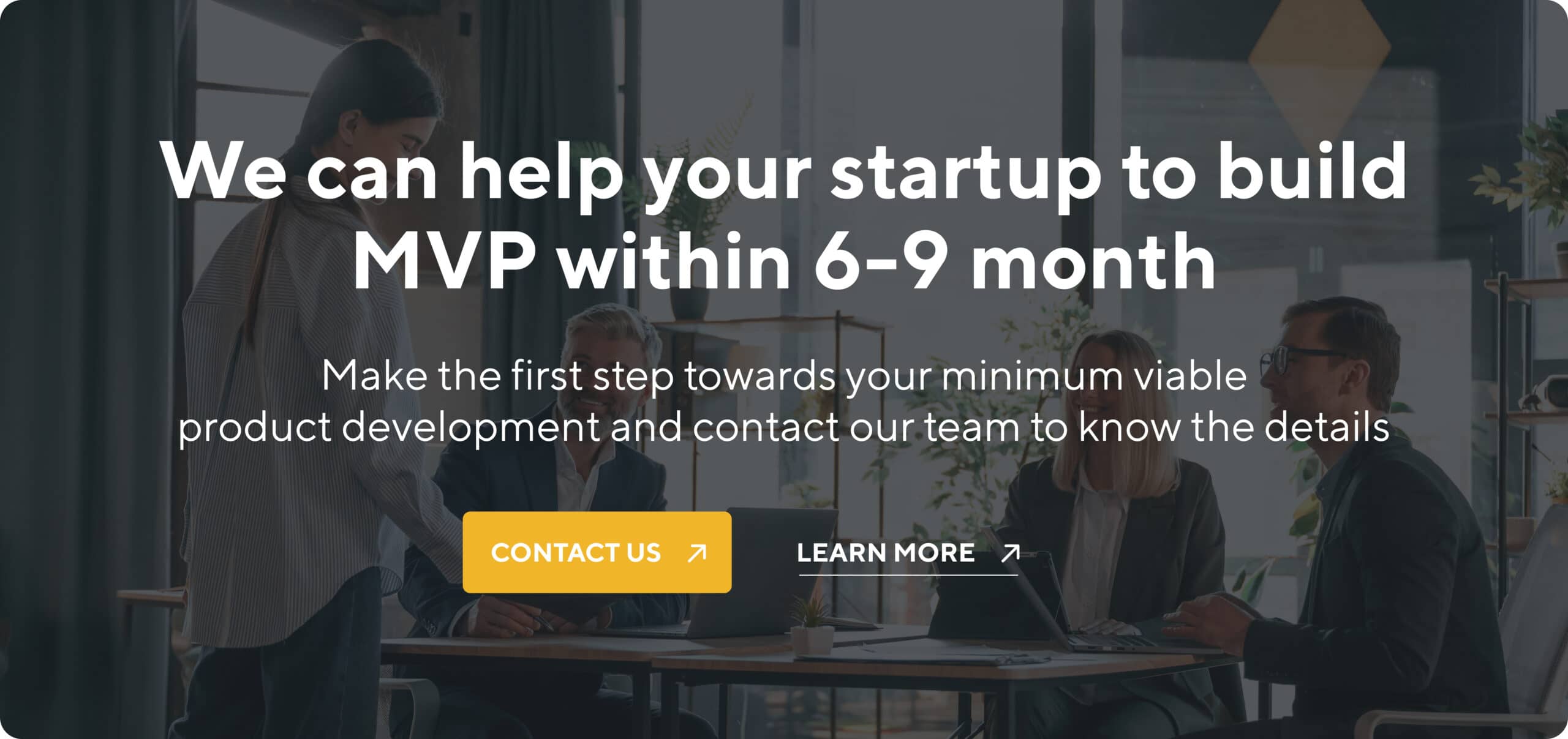Successful applications such as Instagram, Uber, Spotify, and numerous others have one thing in common; they’ve used a Minimum Viable Product (MVP) approach. With this software development technique, business owners get a chance to test their products’ viability and feasibility.
Companies exploit MVP development benefits and build new features according to user testing data. They then use their feedback to advance into well-developed apps in the current scenario.
This article covers the Minimum Viable Product development process and its key benefits for startups and SMBs.
What’s MVP Development?
MVP development refers to creating a product that consists only of basic functionalities that resolve significant challenges for a straight set of users enabling a company to launch it to the market powerfully.
The Minimum Viable Product development approach drives many startups and companies to success. The MVP benefits are that a company can analyze customer wants and offer the customer efficient service with affordable cost and reasonable effort.
When developing a service concept or product, it’s difficult to predict whether it’ll be a worthy investment. With the MVP approach, a company avoids wasting precious resources on sophisticated features. Instead, it creates a basic system.
For a Minimum Viable Product to be successful, it should capture the attention of early-adopter customers and confirm a product concept early on. Thus, MVP software development is used to invent basic features that provide users with some essential capabilities. Aspects such as enhanced user experience and advanced app functions are only incorporated when the company launches the product.

Picture 1. MVP development.
Why Most Startups Fail With Their MVPs
Most startups fail to see the benefits of building an MVP and go ahead to release the full functionality of their products. Often, startups are 100% certain that their concept will fit customer needs and stand out from competitor products. However, 90% of startups fail to comprehend the latest trends.

Picture 2. Why most startups fail with their MVP.
Therefore, let’s go over why most startups fail with their MVPs.
1. Inadequate research
Lack of statistical data is the main reason why startups fail. Many startup founders skip the discovery and creation phases. The product discovery stage is an essential procedure that helps the company conduct market analysis, create a roadmap, and develop prototypes.
2. Lack of skilled employees
Most startups usually don’t have experienced professionals, especially in the development field. This could be attributed to budget constraints or difficulty in finding experienced developers. Another reason could be that the company hired the wrong specialists due to a lack of experience or knowledge in software engineering details.
3. Wrong choice of the tech stack
Due to the lack of experienced professionals in the development field, a company may make an incorrect choice when selecting the tech stack to use for their Minimum Viable Product. This may increase the cost of the entire development process and make their MVP too costly to support.
4. Not following development stages
Due to budget constraints, inadequate product development experience, and limited time frame, startups may skip essential development stages, for example, thorough testing. As a result, a company can face serious errors, inability to launch MVP, and profit loss.
5. No market demand
A successful software product addresses an existing problem. The product offers a solution to customers who regularly face this challenge. Some startups launch products that provide solutions to an irrelevant or non-existent issue; hence they fail since there’s no market demand.
6. Failing to meet customer expectations
Many aspects make a company’s MVP click with their customer base. Disregarding any aspect can make the company lose its revenue. When clients show interest in your product but quickly abandon it, you’ve successfully identified an issue but failed to address it with your software.
Key Benefits of MVP Development for Businesses
Starting your product development journey with an MVP is an excellent solution as it greatly benefits your business. Below are some of the most essential MVP software development benefits.

Picture 3. Key benefits of MVP development for business.
1. Ensures success and prevents loss
A startup with inadequate funding and a company with insufficient resources can still reap MVP benefits. For a startup, the objective is to utilize resources to offer everything required for the software to work and appeal to the customer base.
For a company with inadequate resources, the objective is to get the software to a stage where investors can analyze the chances of its success or launch it with the available resources.
The MVP development benefits in both instances are that it’ll aid in preventing losses since only the essential features that let customers give feedback will be developed. This minimizes application development costs and is also an excellent way to lead a company to success because the customer needs will be assessed to develop the software further.
2. Cost-effective approach to bringing in investors
Investors play an integral role in the success of any business. The challenge, however, is that they don’t invest blindly. Investors often need to see a practical application and proof that it’ll perform successfully. Only the essential features that form the framework are required.
Minimum Viable Product software development benefits are that it provides developers with an opportunity to create a working product for investors to get a feel of it. This gives them a preview of what to expect once it’s fully developed based on user feedback.
At LaSoft, on early project stages we help our clients to conduct a market research, test hypothesis and prepare a solid justification for a project. Also, we can prepare a clickable prototype, so the client, users and investors are able to review the product even before the development starts.
3. Enables market validation and release
MVP informs customers about a brand showcasing its edge and value over the competition. It offers a great way to assess how a product will perform once it’s fully developed.
This is because the software will be deployed to interact with the target user audience with all market factors. Therefore, before the initial launch and release, the customer base will be aware of the product.
This approach also allows a business owner to get the product to the market faster. From the development stage, the software will be introduced to the market.
4. Provides a way for companies to test market demand
In any business, the rule of thumb is that demand should influence product creation. Therefore, before spending heavily to build a product, it’s essential to test the waters. The software can be tested using an MVP to see if it meets user needs without developing it fully.
In addition, a company can test ideas—it can then determine which concepts should be retained and those that should be done away with.
5. Customer-centered development
The minimum nature of the software implies maintaining a clear focus on the end-user requirements. The company will have to limit the software features to only those that solve user problems, putting all unnecessary add-ons aside.
Even though some features might make the software look sophisticated, they won’t add much value to the software in the initial phases. Customers prefer clear solutions to their issues as a main priority. An MVP puts the focus solely on delivering what users require.
Further software development iterations are focused on feedback from actual users. A company can adopt necessary improvements faster, starting with the Minimum Viable Product. Making iterations to an MVP requires fewer resources than changing a big, intricate final solution.
6. Scalability
Another MVP benefit is better scalability development. After a company releases a Minimum Viable Product and gets user feedback, team leaders can see what changes they need to make and what new features they should develop next. In such a gradual build-up approach, the risk of making iterations is lower, and the company can focus on advancements.
Based on early user feedback, the developers can refine the features users propose and further iterate by adding features for new use cases. The company can scale the software to a broader audience via a stream of enhancements based on previous customer experience.
All these Minimum Viable Product benefits, in one way or another, aid in optimizing the development cost and get valuable insights for building software that perfectly fits user expectations.

Conclusion
Minimum Viable Product development is a winning business solution that facilitates the close interaction between end-users and product creators. It’s a kind of co-creation because both parties, the consumer and brand, participate in product development.
Many businesses see MVP as an efficient approach to designing a product. So, if you’re looking for a company that will help you get to the market fast and reliably, LaSoft will assist you in developing a high-quality Minimum Viable Product!


